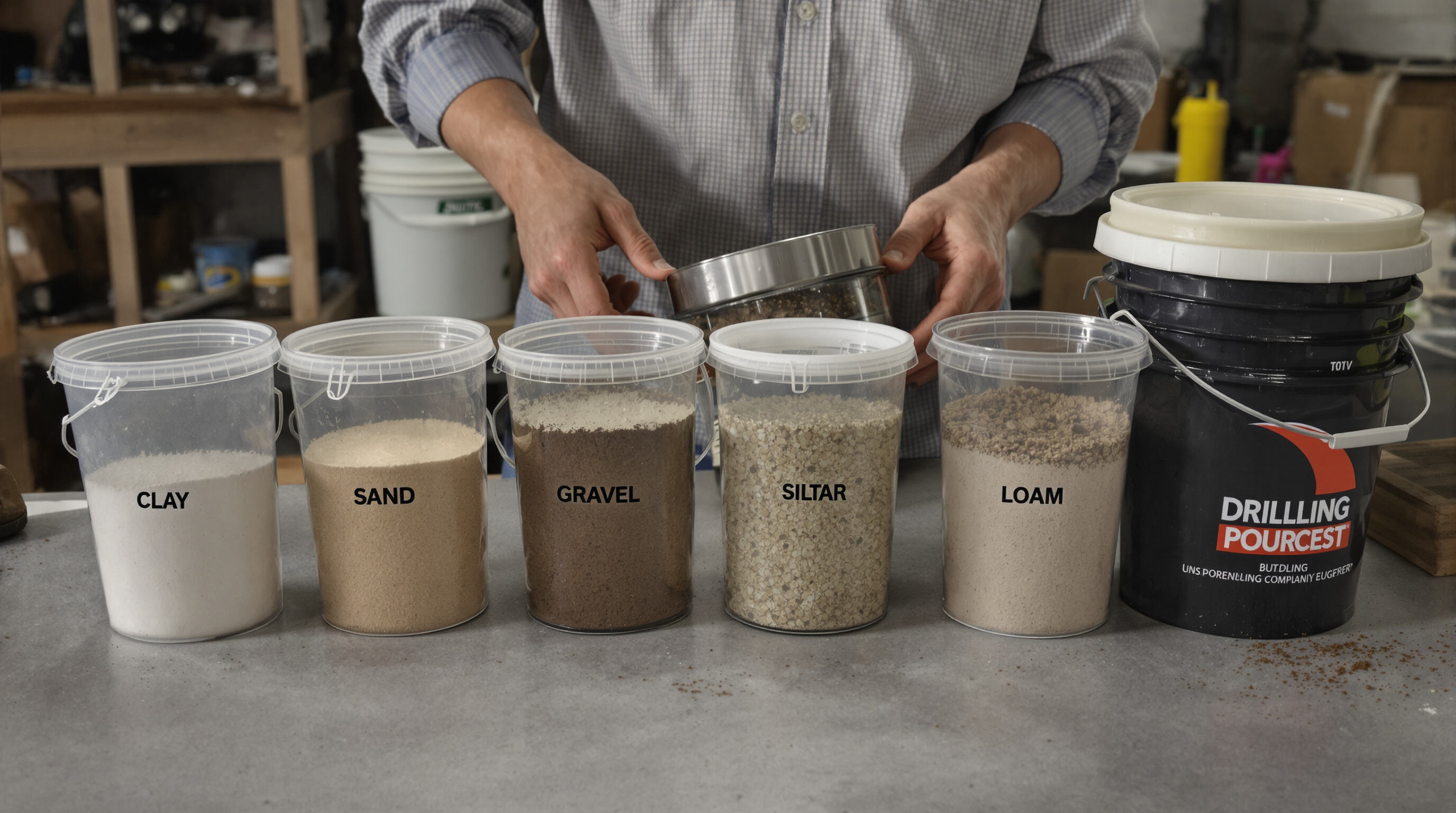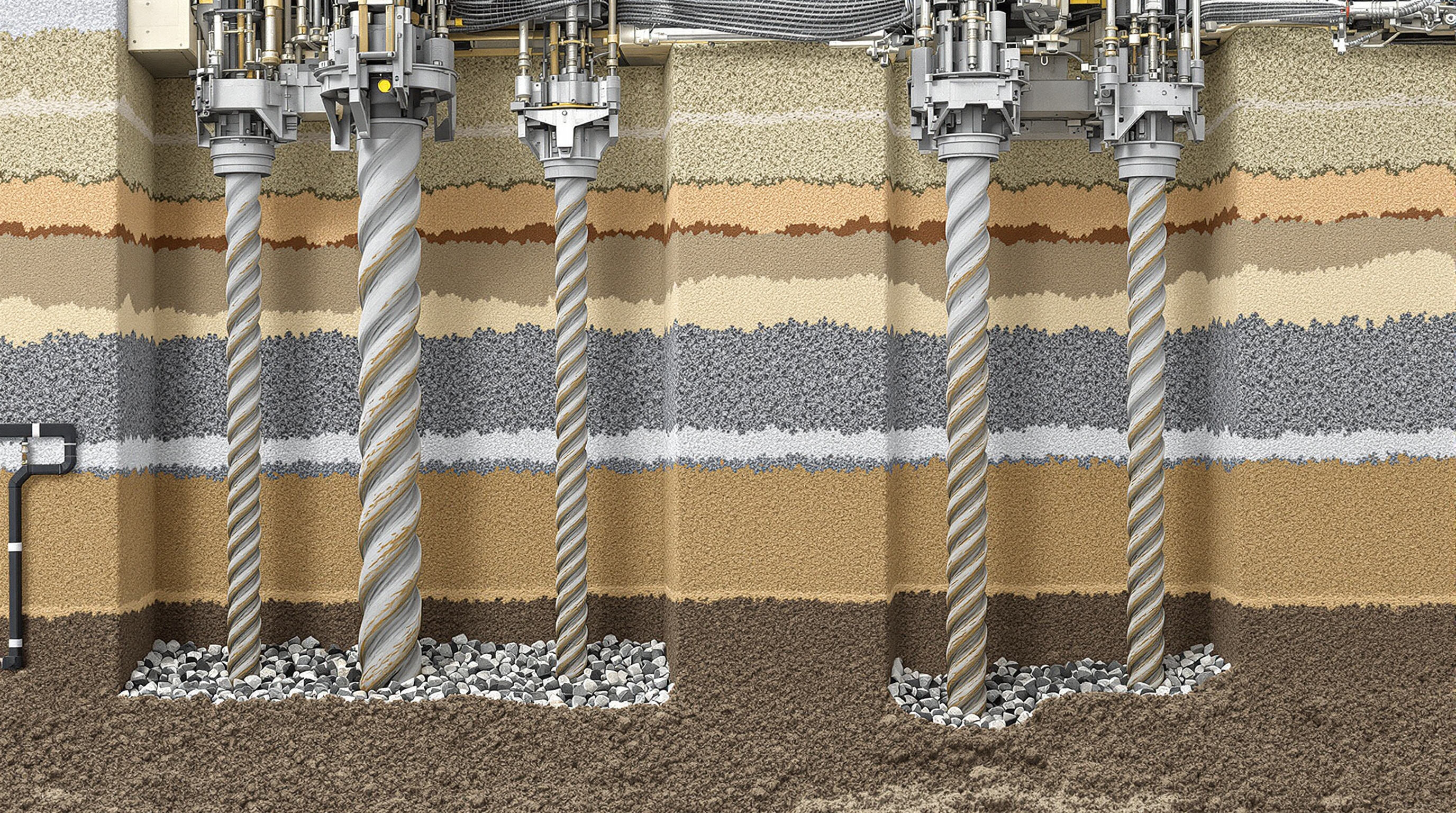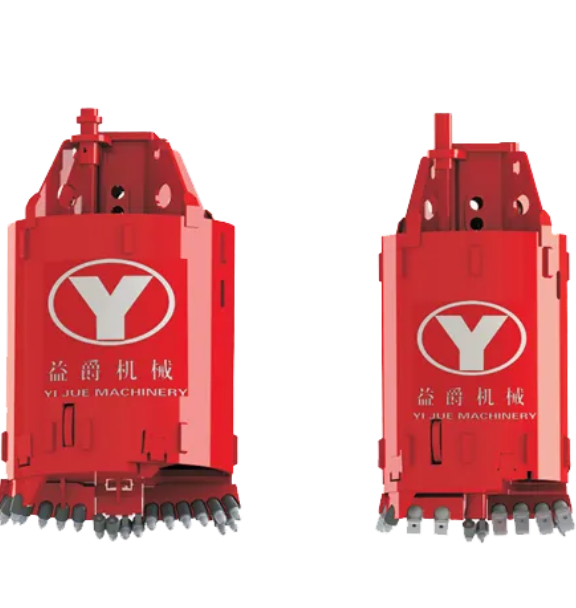Understanding Ground Conditions to Guide Drilling Bucket Selection

Key Soil Types and Their Drilling Characteristics: Clay, Sand, Silt, Gravel, and Loam
When dealing with cohesive soils such as clay, operators need drilling buckets featuring wider cutting edges to reduce how much material sticks to them during operations. For non-cohesive materials like sand though, the approach changes completely. These types of soil call for buckets with more aggressive tooth arrangements that can actually bite into the ground effectively. Gravel layers present another challenge altogether because they wear down equipment so quickly. That's why many contractors opt for buckets built with extra reinforcement when working through these abrasive conditions. According to research published last year in the field of geotechnics, switching to wider bucket designs can boost performance in sandy areas by around 40 percent over their narrower counterparts. Loam soil is somewhat of a middle ground since it contains a good balance between sand, silt, and clay particles. While this makes it compatible with various bucket types, maintenance crews still find themselves needing to clean out residue regularly just to keep things running smoothly.
Identifying Subsurface Challenges in Clay, Sand, and Rock Layers
When dealing with sticky clay formations, bucket clogging becomes a real problem that needs some kind of self cleaning mechanism. Things get even worse when we find rock layers hiding in areas where we expected soft soil, leading to all sorts of premature wear issues. According to field reports from last year, projects tend to take about 25% longer than planned when the wrong type of bucket hits those tricky sand rock boundaries. The Field Operations Journal mentioned this finding back in 2022. Before starting any drilling operation, it makes sense to run penetration tests first. These tests help spot those pesky cobble layers or changes in moisture content that can completely change how the soil behaves under pressure during actual drilling work.
Using Geological Classification Systems to Match Buckets to Ground Conditions
The Unified Soil Classification System (USCS) provides a standardized framework for selecting bucket specifications. For example:
| USCS Class | Soil Type | Ideal Bucket Feature |
|---|---|---|
| CL | Low-plasticity clay | Serrated cutting edges |
| SW | Well-graded sand | High-density tooth arrangement |
A 2024 analysis shows projects using USCS-guided bucket selections reduce tool replacement costs by 32% compared to generic approaches. Always cross-reference site-specific core samples with regional geological maps for optimal bucket pairing.
Optimizing Drilling Buckets for Cohesive Soils and Soft Ground Applications
Bucket design considerations for high-plasticity clay and cohesive materials
Cutting edges that measure around 600 to 800 millimeters wide along with blades that curve more sharply work best when dealing with high plasticity clay. These designs cut down on how much surface area touches the clay, typically reducing it somewhere between 15 and 20 percent which helps prevent sticking issues. According to what many in the field have observed, getting the blade curvature right can boost clay removal rates by about 30 percent, which means shorter overall operation cycles. Top companies in this space often coat their blade edges with special hardened steel mixtures to stand up against wear and tear from working through damp clay deposits where friction is especially problematic.
Blade configurations and hydraulic efficiency in non-cohesive soils like sand
Serrated blades with 45–60° tooth angles enhance shear strength by 25–40% in sand, enabling faster penetration. Hydraulic systems delivering 18–22 kN/m² pressure maintain consistent cutting depth in loose granular soils. Narrower buckets (500–650mm width) improve sand retention, with field tests showing 18% faster cycle times than wider configurations.
Self-cleaning features to prevent clogging in sticky soil conditions
Vibration-assisted liners and hydrophobic polymer coatings reduce clay adhesion by 60–75% in high-moisture environments. A 2023 field study of silty clay projects found staggered gate designs cut clogging incidents by 40% compared to traditional flat gates. Rotational speed adjustments (12–18 RPM) combined with pulsed hydraulic flushing optimize material release in mixed clay-silt layers.
Selecting Rock Drilling Buckets for Soft to Hard Formations

When to use heavy-duty rock buckets: Indicators in soft, medium, and hard rock strata
Choosing the right drilling bucket really depends on two main factors: how strong the rock is when compressed and how abrasive it gets. For soft stuff like mudstone, milled teeth work great because they create chips efficiently. When dealing with medium hard sandstone though, most drillers go for tungsten carbide inserts (TCI) since these strike a good balance between cutting speed and keeping the tools from wearing out too fast. Granite and basalt present different challenges altogether. These tough rocks demand heavy duty buckets with reinforced sides and super dense TCI teeth. The numbers back this up too penetration rates can fall anywhere from 40 to 60 percent slower in these hard formations compared to softer ones according to the Drilling Efficiency Report 2024. And let's not forget about cycle times either specialized rock buckets can actually cut through basalt 22 percent faster than regular models, which makes a real difference on site productivity.
Tooth configurations and cutting tools: Carbide inserts vs. roller cutters
| Feature | Carbide Inserts | Roller Cutters |
|---|---|---|
| Optimal Use Case | Medium-hard rock | Heterogeneous formations |
| Wear Resistance | 800–1,200 drilling hours | 500–700 drilling hours |
| Maintenance Frequency | Every 50 hours | Every 30 hours |
Carbide inserts outperform roller cutters in homogenous limestone by 31% in sustained penetration rates. However, roller systems remain preferred for transitional zones with mixed rock and clay due to their self-sharpening properties.
Wear resistance and structural integrity in abrasive rock environments
Basalt drilling operations show bucket teeth erode three times faster than sidewalls in silica-rich environments (Geomechanics Journal 2023). Boron-steel alloys in high-stress zones extend service life by 18 months in quartzite formations. Spiral tooth arrangements reduce abrasive wear by 27% compared to linear patterns through improved material flow.
Performance comparison: Penetration rates in limestone versus basalt
Penetration metrics vary drastically across rock types:
- Highly fractured limestone: 4.2 m/hour
- Massive limestone: 2.8 m/hour
- Vesicular basalt: 1.5 m/hour
- Dense basalt: 0.7 m/hour
Basalt requires 58% more hydraulic power than limestone for equivalent penetration depths. This disparity explains why 73% of hard rock contractors now use automated pressure-adjustment systems based on real-time formation feedback.
Multipurpose and Combo Buckets for Mixed Soil-Rock Geologies
Balancing Versatility and Efficiency in Transitional Ground Conditions
Combo buckets combine wide-entry mouths for soft soils with reinforced cutting edges for rock penetration, reducing tool changes by 40–60% in transitional zones (2024 Geological Survey). Operators prioritize models with adjustable blade angles to maintain over 85% efficiency when transitioning between clay pockets and fractured sandstone layers.
Blade and Tooth Design for Hybrid Formations Like Sandstone-Clay Interfaces
Carbide-tipped interlocking teeth offer 30% longer lifespan than standard configurations in sandstone-shale interfaces. Manufacturers optimize bucket geometries using ASTM D5731 soil classification data, creating staggered tooth patterns that prevent material bridging in sticky clay-rock matrices. Self-cleaning flute designs reduce downtime by 25% compared to traditional buckets in these conditions.
Field Performance Insights: Using Combo Buckets in Complex Urban Projects
Looking at urban construction projects across California in 2023 showed that combo drilling buckets work significantly better than traditional tools in areas with mixed alluvial deposits. These combo units penetrate ground material about 1.2 to 1.5 times faster than single purpose equipment according to field data. Most contractors we talked to saw around an 18 percent drop in overall costs when they switched to combo systems for foundation work that cuts through both soft soil layers and partially broken bedrock below. And there's another benefit worth mentioning too: smart equipment choices cut down on how often tools need replacing. On average projects save anywhere from twelve thousand to eighteen thousand dollars just by avoiding premature wear and tear on expensive drilling components.
Custom Drilling Bucket Solutions and Collaboration with Specialized Suppliers
Engineered-to-order buckets for site-specific challenges in constrained environments
These days, most drilling projects need specially made buckets that can handle whatever weird rock formations they encounter. Think about those tight spaces under cities where there's barely room to maneuver, or along coastlines where the ground switches between sandy spots and salty water zones. Modular bucket systems really shine here because they let crews adjust on the fly. Some real world tests have found that when companies order buckets specifically built for their site conditions, they actually finish jobs about 18% faster in cramped locations. The secret? Getting the bucket size right, placing teeth where they'll bite best, and making sure debris gets cleared out efficiently without causing backups.
Partnering with suppliers for formation-specific adaptations
Working closely with specialized manufacturers helps make sure our tools actually work in real underground conditions. Many top companies run joint development initiatives where their engineers look at actual rock cores to tweak bucket designs for specific challenges like grinding basalt layers or soft clay deposits that expand when wet. Take the recent coastal highway expansion along the Gulf Coast in 2023 as an example. The contractors there used custom buckets from their equipment suppliers featuring offset carbide teeth and stronger side cutting edges. These modified buckets managed to dig through alternating layers of sandstone and clay 22 percent quicker than regular buckets would have done, according to field tests conducted during the project.
Industry trend: Rising demand for customized drilling buckets in infrastructure
The global infrastructure sector’s push toward complex geotechnical projects has driven a 34% increase in demand for customized drilling solutions since 2021 (Global Excavation Report 2024). Tailored tooling reduces wear costs by up to $18/hour in hard rock environments while improving borehole accuracy in sensitive ecosystems.
FAQ
What factors should be considered when selecting a drilling bucket for clay soils?
When selecting a drilling bucket for clay soils, consider wider cutting edges and sharp blade curvature to minimize sticking. These design choices improve clay removal efficiency and reduce operation cycles.
How can geological classification systems assist in selecting drilling buckets?
The Unified Soil Classification System (USCS) offers a standardized approach for choosing bucket specifications by matching soil types with ideal bucket features, reducing tool wear and improving efficiency.
What are the main features of combo buckets for mixed geologies?
Combo buckets feature wide-entry mouths for soft soil penetration and reinforced cutting edges for rock. Adjustable blade angles and carbide-tipped interlocking teeth are common features to optimize performance.
Why is there a rising demand for customized drilling buckets?
Customized drilling buckets are increasingly in demand due to the complexity of modern infrastructure projects requiring site-specific adaptations. Tailored designs reduce wear costs and improve accuracy in diverse environments.
Table of Contents
- Understanding Ground Conditions to Guide Drilling Bucket Selection
- Optimizing Drilling Buckets for Cohesive Soils and Soft Ground Applications
-
Selecting Rock Drilling Buckets for Soft to Hard Formations
- When to use heavy-duty rock buckets: Indicators in soft, medium, and hard rock strata
- Tooth configurations and cutting tools: Carbide inserts vs. roller cutters
- Wear resistance and structural integrity in abrasive rock environments
- Performance comparison: Penetration rates in limestone versus basalt
- Multipurpose and Combo Buckets for Mixed Soil-Rock Geologies
- Custom Drilling Bucket Solutions and Collaboration with Specialized Suppliers
- FAQ


